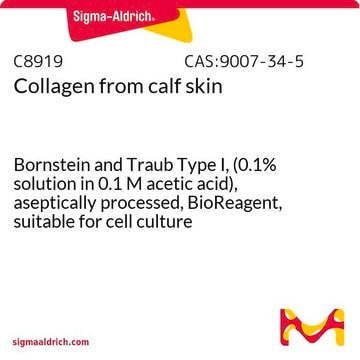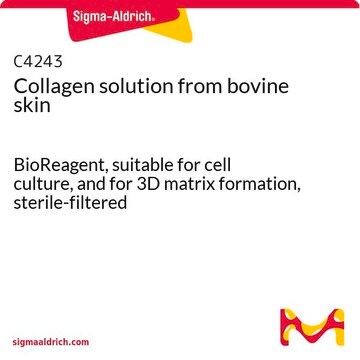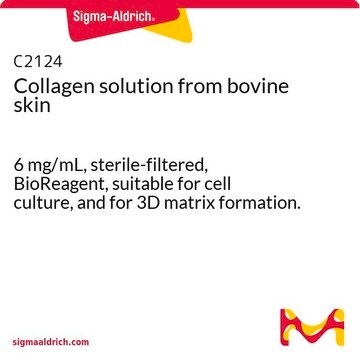The Product Information Sheet for Collagens for Cell Culture recommends preparing a 0.1% (w/v) (=1 mg/mL) collagen solution in 0.1 M acetic acid, stirring at room temperature for 1-3 hours until dissolved.
https://www.sigmaaldrich.com/deepweb/assets/sigmaaldrich/product/documents/235/003/c9791inf.pdf
Given that our solubility testing is performed at a concentration of 5 mg/mL in H2O, (with the pH adjusted to 3.0 with acetic acid), it is possible to prepare a 3 mg/mL solution.
https://www.sigmaaldrich.com/specification-sheets/130/681/C9791-BULK________SIGMA____.pdf











